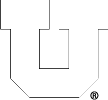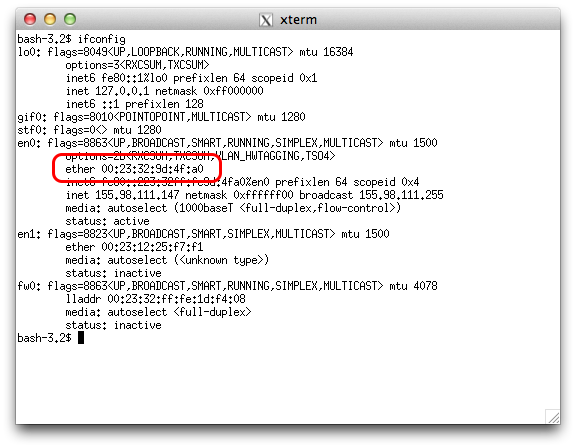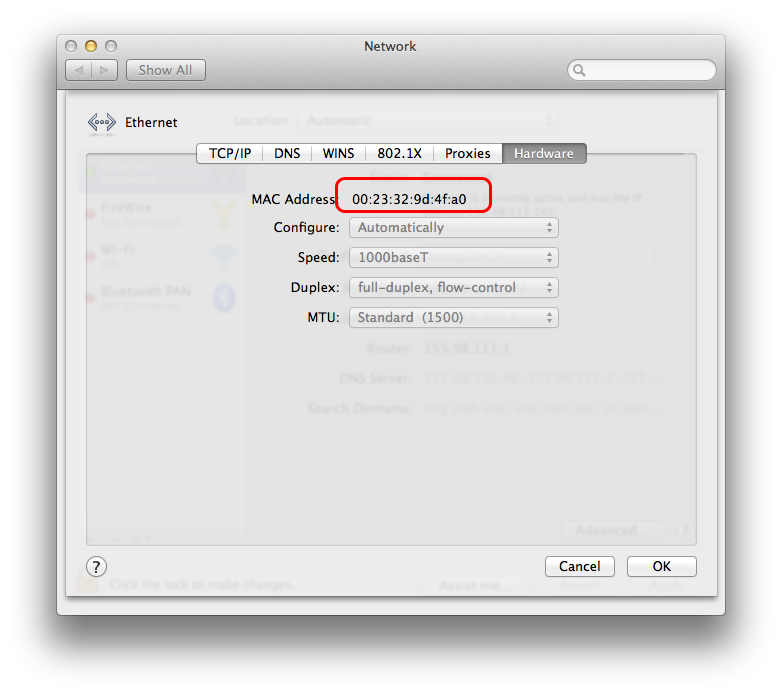Instructor Information
How do i share a folder or files with another user or group?
Once logged in to a linux machine, open a Terminal and you’ll issue a few commands. By default, you start in your home directory (/home/username) and it may appear with a prompt to the left of the cursor indicating that (a user’s ‘home’ may be represented by the ‘~’ char).
If you don’t have a directory to share, create one with something like:
[warthogs@lab1-23 ~]$ mkdir TeamSamba
The directory inherits the default permissions, in this case rwx (read-write-execute for the owner, your username; read-execute for group; read-execute for everyone/all users:
[warthogs@lab1-23 ~]$ ls -ld TeamSamba/
drwxr-xr-x 2 warthogs csugrad 4096 Oct 9 12:47 TeamSamba/
To verify the groupname for setting the directory permissions, find out which groups you’re a member of:
[warthogs@lab1-23 ~]$ groups
csugrad telerobotics mediashare src cs6090 cei manu
And assign one to the directory:
[warthogs@lab1-23 ~]$ chgrp telerobotics TeamSamba
[warthogs@lab1-23 ~]$ ls -ld TeamSamba/
drwxr-xr-x 2 warthogs telerobotics 4096 Oct 9 12:47 TeamSamba/
Finally, set the permissions so the group can write files, but no other users can see in the directory:
[warthogs@lab1-23 ~]$ chmod 2770 TeamSamba/
[warthogs@lab1-23 ~]$ ls -ld TeamSamba/
drwxrws— 2 warthogs telerobotics 4096 Oct 9 12:47 TeamSamba/
See ‘man chmod’ or ‘man chgrp’ for syntax details and more information.
Connecting to PCE via the Campus VPN
For remote access to most CADE/PCE IT services or systems, you need to use the Campus VPN (Virtual Private Network) with a valid uNID.
NOTE: If you are not associated with the John and Marcia Price College of Engineering, this is NOT FOR YOU.
1. Verify you know your CIS credentials and have Two-Factor Authentication (Duo) setup and that your Duo device is available. You will also need the Duo App on your smartphone or mobile device as campus requires 2 Factor Authentication(2FA) for VPN service.
* * * STUDENTS * * *
Before reading further, go ahead and opt IN to ‘Duo Security’, the U’s two-factor authentication (2FA) service. Log in to CIS and select the Duo 2FA Management tile to turn it on, or try here:
2. Download the VPN client, GlobalProtect and connect to vpn.utah.edu. See full details and info here: it.utah.edu/vpn
3. Enter your uNID and CIS password in the ‘password’ field.
For the ‘second password’, enter ‘push’ and you’ll receive the Duo prompt for approval (similar to the ‘Send Me A Push’ used in web apps). Alternatively, open the Duo App on your device and generate the ‘second password’ by clicking on the UofU banner/down-arrow- enter the 6-digit #.
Further information and instructions for support can be found at https://uofu.service-now.com/UIT/VPN KnowledgeBase Article and the https://uofu.service-now.com/UIT/DUO 2FA KnowledgeBase Article
Which username/password should i use for [insert service name]?
We have {finally} evolved to where each user has ONE username and ONE password for all PCE/CADE machines and services. We may refer to your CADE or PCE username and password. This is separate from your CIS/uNID and it’s password, but we may ask you to use those for authentication, such as when creating your account or changing your password.
Accounts created prior to ~May of 2017, CADE/PCE username is some combination of letters from your names (First, Middle(s), & Last) and generated by an algorithm. For all newer accounts, the username is your uNID (formatted as a lower-case ‘u’ and 7 digits). Once created, we don’t change them except in rare circumstances.
Your CADE/PCE account is used for:
• logging in to any Linux, macOS, or Windows computer on our Domain (USERS\ or users.coe.utah.edu), including lab machines, Terminal Servers, VDI hosts, or other Virtual Machines.
• connecting/mounting a Network File Share with CIFS/SMB.
• WebPrint and any PaperCut printing services.
• mounting a Network File Share with NFS.
Note: Your CADE/PCE username and passwords are 100% separate and in addition to your CIS or other campus logins and accounts. Some departments may have labs or computers that require specific logins.
Where can I download Matlab?
If you haven’t already done so, after reading the description and deciding which license applies to your situation, you’ll need to purchase Matlab from OSL here: http://software.utah.edu/news/mathworks.php (click the ‘Shop For Software’ button)
For students and single-machine installs, you should see the following link on your receipt or e-mail from software@utah.edu describing the process to download and install Matlab: Instructions for Single User Licenses
OSL also has a full FAQ page dedicated to the new campus license for MathWorks software: http://software.utah.edu/faq/license/mwc/
Computational Server
CADE no longer provides Computational Servers.
If you need to run long computational jobs or higher-powered computing resources, we suggest getting an account with CHPC.
What is the process for unsubscribing from a Sympa mailing list?
To unsubscribe from a list, do as follows:
1. From the address with which you subscribed to the list, send a message to sympa@list.eng.utah.edu.
2. In the subject line of your email, type in: unsubscribe nameofthelist (replace ‘nameofthelist‘ by the name of the list you want to unsubscribe from).
3. Leave the message body blank. To save some time, you can also send several commands in a single message. To do that, follow the instructions available in the ‘How the mailing list service works’ section.
You can also unsubscribe through the mailing list web interface (you will need to repeat the operation for each list you want to unsubscribe from):
1. Go to the list environment homepage and log on with your e-mail address as the username.
2. Go to the information page of the list you want to unsubscribe from.
3. In the left menu, click on the ‘Unsubscribe’ link.
Further list information is available at https://sympa.eng.utah.edu/sympa/help
NOTICE: We will be retiring the server that runs Sympa at the end of June, 2017. Please consider moving all mailing lists to other services, such as https://www.lists.utah.edu/.
Can I get account information for my students at the beginning of the semester?
Yes. We will have class lists for all registered students ready by the first day of classes. If you would like handout slips to give to your students we will be happy to provide them. Please call (1.801.581.7551) or send us an e-mail ahead of time with the class you are holding, or particular sections.
We generate new accounts from class roles and those accounts can reset their own password via our handy web-tool, or the kiosk machines in WEB 210 and 224.
How do I subscribe users to my mailing list (and other basic list functions)?
NOTICE: We will be retiring the server that runs Sympa at the end of June, 2017. Please consider moving all mailing lists to other services, such as https://www.lists.utah.edu/.
– – – – – – – – – – – – – – – – – – – –
The help system within Sympa is rather extensive and very helpful. From the sympa home page, click the Help tab at the top of the page. From there, you can enter the different sections- most helpful being the User Guide and the Administrator Guide.
Second on the list of the User Guide is “Subscribing to mailing lists”, which list the options. You can tell students to send you (a professor, TA, or other owner/moderator of the list) to add them, or they can send a ‘subscribe’ message to the list.
There is also a User FAQ page that will answer many basic questions, and a good place for students unfamiliar with the lists to start- direct them to: Sympa
Once your mailing list has been created (see https://sympa.eng.utah.edu/sympa/help/introduction), you can log in to the sympa site to administer the list. As a list owner, and often as a moderator, you can add/change/delete users.
Optionally, we can set up the list to auto-populate from the list of registered students in the class with their University-registered e-mail account (ie, UMail, or what they’ve set in CIS as their default).
As always, if you can’t find your answer in the Help section, then let the Opers know.
How do I set up a class webpage?
You can put your site files in either a public_html or .public_html directory within the home directory of the class account. You must make sure you have the correct permissions set:
[/home/ece3300]# ls -ld
drwxrwsr-x 14 ece3300 ece3300 4096 Dec 16 2011 public_html
[Note- the public_html permissions are set to 2775, in this example.]
If you are going to have a TA run the site for you, ensure that the directory and files are also group writable and that the TA is in the group for that class (see the FAQ on creating classes and groups).
How do I set up a class account or group?
If you need a class account for a course you are teaching (to host website files, handin, etc.) we will be happy to create one for you or give you access to an existing one. Please send a request via opers@eng.utah.edu.
The class will also have a group associated with it. This will allow you to select who has read/write privileges on the class files (such as TA’s). You can modify users in the group by using the groupmodify command on any of the CADE lab machines, or via our web tool.
How do I go about reserving one of the labs?
We have a lab reservation form available on the CADE homepage.
See the reservation form for up to date details on each lab space, and the maps for where they’re located.
How do I use the handin system for my class?
In the class folder (/home/ece2500, for example) create a directory named handin and set the correct permissions (if the folder already exists you can skip this part):
mkdir handin
chmod 770 handin
chmod g+s handin
chgrp groupname handin
(groupname is typcially the course number, same as the home directory)
Now you need to add a users.deny file to this directory to allow students to handin assignments:
cd handin
touch users.deny
chmod 644 users.deny
chgrp groupname users.deny
Now you need to create directories for each assignment. This is the same process as creating the handin directory:
mkdir hw1 (call this whatever you want)
chmod 770 hw1
chmod g+s hw1
chgrp groupname hw1
You will need to put another users.deny file in this folder to make it writable:
cd hw1
touch users.deny
chmod 644 users.deny
chgrp groupname users.deny
To lock the directory after the homework deadline simply remove the users.deny file from the homework folder:
cd handin/hw1
rm users.deny
Students can now hand in their assignments using the online form:
https://webhandin.eng.utah.edu/
or using the command line on the Linux machines:
handin class# hw# /path/to/local-file
Which machines can I access remotely?
You can access any of the machines within the CADE Lab (Linux) with ssh and NoMachine. For ssh, from a terminal window, use ‘ssh -Y username@machine.eng.utah.edu’, where username is your CADE login. The naming convention for machine is:
CADE
CADE Lab HTML5 Desktop
lab1-X (where X is any number from 1-40)
lab2-Y (where Y is any number from 1-35)
If you are using a Windows system to access these machines remotely, please use Window PowerShell, putty or see our FAQ’s on CADE Lab Remote Access.
Windows Machines:
You can not access the Engman Lab machines directly, but you may access our VMware VDI pools for a lab-machine setup.
Please see the Windows FAQ’s for more information on how to connect to the Windows system.
Where do I find the MAC/Hardware Ethernet Address of my machine (for the PCE Network Request form)?
The answer depends on what Operating System the machine is running.
On UNIX-based systems (all flavors of Linux, Mac OS X, Solaris, FreeBSD, etc…), you can either use a Terminal/X11 window and issue the command ‘ifconfig’ and the MAC follows ‘ether’ under the en0, en1 or en2 heading – typically, en0 is for Ethernet, en1 is for WiFi/Wireless, so choose the proper section.
On Mac OS X, the other option is to open System Preferences (under the ‘Apple’ menu) and open the ‘Network’ pane. Choose your ‘Ethernet’ connection on the list in the left column, then click the ‘Advanced…’ button, then the ‘Hardware’ tab and provide the ‘MAC Address’. This second method can also help you verify you’ve got the right one from the first.
On Windows Vista or 7, open a Command Prompt by going to the Start menu and clicking ‘Run…’, then enter ‘cmd’ as the command to open and press enter. At the command prompt ‘>’, enter ‘getmac /v’ then press enter. The MAC address for your network connection will be listed in the Physical Address column. You may see more than one network device listed (as shown below). The Connection Name for your ethernet connection will typically start with “Local Area Connection” and the Network Adapter column will typically *not* include “VPN”, “Virtual”, etc…
How can I mount a network shared drive to my computer?
If you are off campus, on uConnect wifi or any network outside of PCE you must first establish a connection to the Campus VPN.
On campus or from the VPN, you can mount a network share/network drive by following the instructions below for your Operating System (OS).
Note: In the descriptions below, replace ‘sharename’ with the share you wish to connect to. To connect to your home directory, you can replace ‘earth.coe.utah.edu’ with ‘chips.eng.utah.edu’ and ‘sharename’ with ‘home/username’ (or home\username, on Windows).
For Windows users- open a Windows Explorer window and choose the menu ‘Tools’ :: ‘Map Network Drive.’ In the window that opens, choose a drive letter not in use, and for folder, enter the server and share name as follows: \\earth.coe.utah.edu\sharename or \\chips.eng.utah.edu\sharename (remember, where ‘sharename’ = ‘share-you-want-to-mount’). Click the ‘Reconnect at logon’ if that’s your preference, but you must check the ‘Connect using different credentials’ box. Click ‘Finish’ and enter your PCE username and password.
For macOS users- in the Finder, select the menu ‘Go’ :: ‘Connect to Server…’ (or cmd-K). For the Server Address, enter smb://earth.coe.utah.edu/sharename or smb://chips.eng.utah.edu/sharename and click the ‘Connect’ button. In the user window that appears, ensure ‘Registered User’ is selected and in the Name field enter your PCE username and password and click ‘Connect’.
What software licenses does CADE maintain?
What Matlab Toolboxes are available for students/research to use? What features are licensed for use in Comsol? Do we have a license for Fluent/Gambit?
Answers to these and more can be found on the license status page here: https://flex.eng.utah.edu
What do I do to get my UCard to work in the lab card swipes?
The door swipes for the CADE and Engman labs are now handled by campus authentication. There is no need for you to update your card number since it is automatically pulled from campus LDAP. If you get a new UCARD, it can take up to 48 hours for you to gain access to the labs.
May I access my campus desktop machine remotely?
The short answer: yes.
The longer version: If the machine has a static IP address, try connecting to that remotely. The machine must be set up to allow remote access (via ssh, Screen Sharing/VNC, Remote Desktop Protocol, etc.) and wake-on-network-access/NOT go to ‘sleep’, but if you don’t have administrator privileges on this machine, we may need to enable remote access for you (see below). We may also need to allow such a connection on the proper ports through the CoE firewall. You will need to be on the Campus VPN to reach your machine.
Connecting to a Windows machine:
– Try using MS’s Remote Desktop Assistant to configure your machine for remote access.
– On the computer you would like to connect TO, in Windows Explorer, right click on ‘Computer’, select ‘Properties’, then select ‘Remote Settings’ from the menu on the right.
– Select your user and ensure it has permission to RDC to the computer, and verify a password is set (RDC will not enable unless the user has a password, it cannot be blank).
– Get the machines IP address- open a command prompt (type “cmd” in Search and it will open) and type “ipconfig” (no ” “‘s) and it will list your IP (use the one in the form of 155.98.X.X, the wired ethernet address)
– On the computer you wish to connect FROM, open your RDC client, put in the IP address, login as the user with remote privileges and you should be connected to the current running session.
Connecting to a Mac:
– On the computer you would like to connect TO, open ‘System Preferences’ and the ‘Sharing’ pane.
– Check the ‘Screen Sharing’ or ‘Remote Management’ for general VNC access, ‘Remote Login’ for ssh access, other available as needed. Ensure you have added your user for the access level on the right.
– Get the machines IP address- click ‘Show All’/reopen System Preferences and click on ‘Network’, and find the Ethernet device in the left column, IP address will show on the right in the form 155.98.X.X.
– On the computer you wish to connect FROM, open Screen Sharing in the Finder via the ‘Go’ :: ‘Connect to Server…’. Enter the address as vnc://155.98.X.X
If you can’t get through or need help getting the machine set for remote access, send the IP and your request, plus any errors or issues you have to support@coe.utah.edu and we’ll help get you connected.




